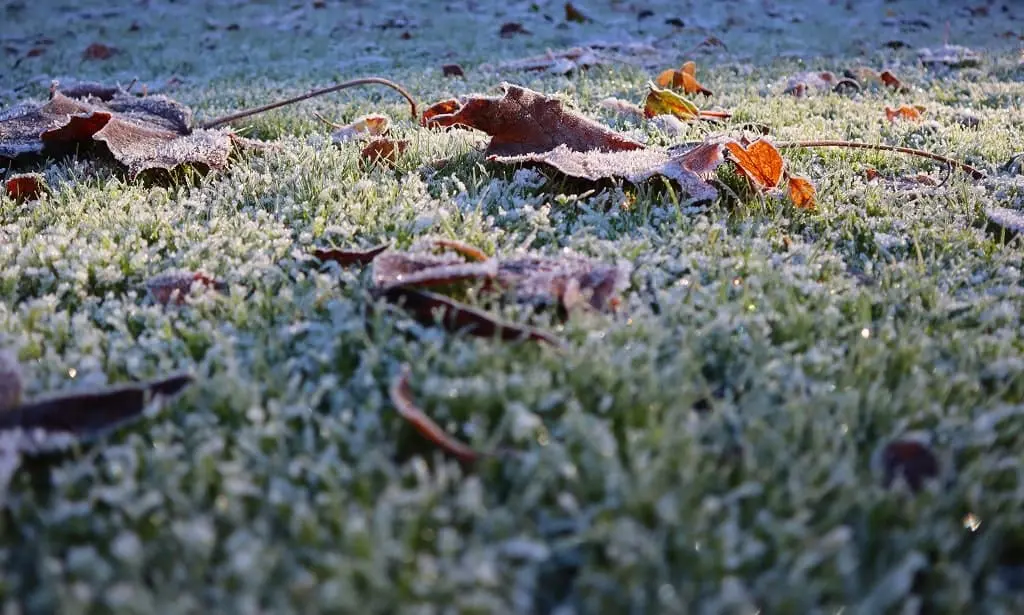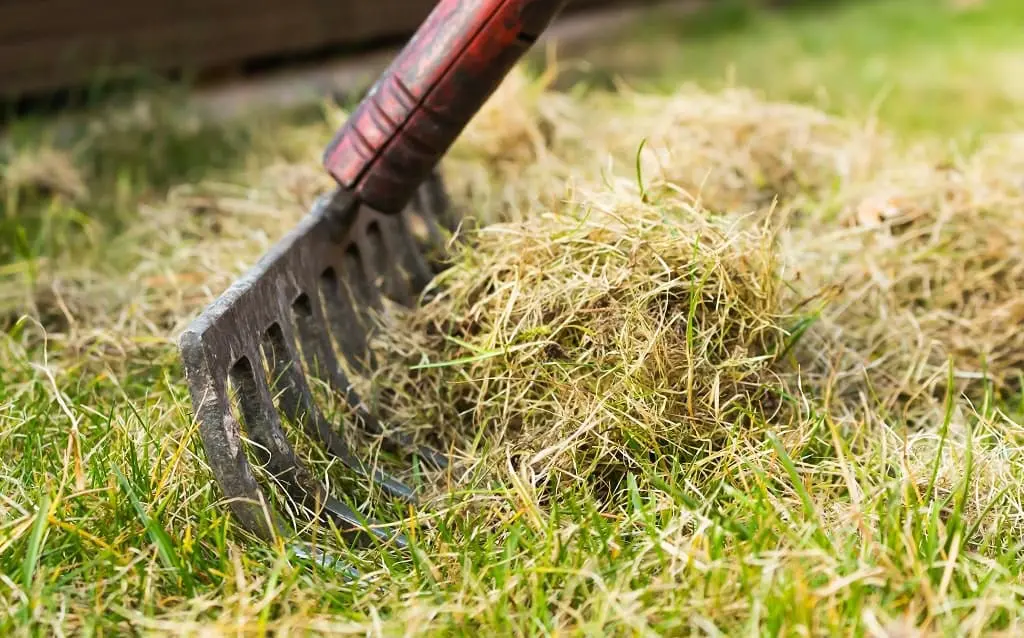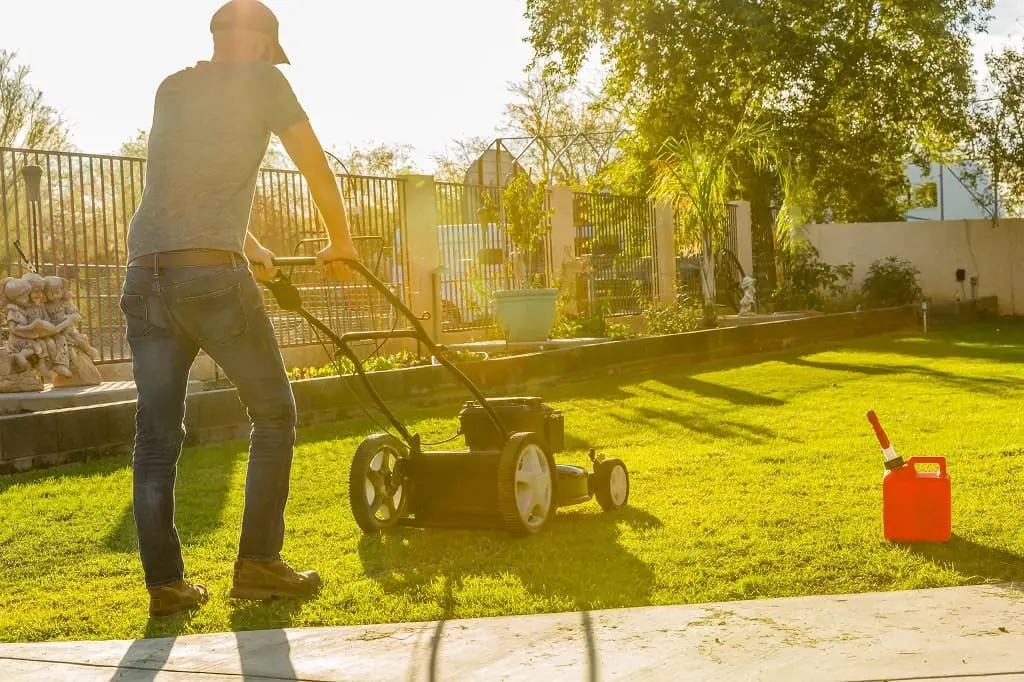To maintain a beautiful lawn year-round, timing is everything. Cities like Green Bay, Milwaukee, and Appleton in Wisconsin, where cool season grasses like tall fescue, Kentucky bluegrass, and perennial ryegrass flourish, require a cool season grass lawn care schedule. While these grasses thrive in the cool temperatures and ample moisture of the fall and spring, they require different tactics in both Winter and Summer.
We’ve created a handy cool season grass maintenance calendar with month-by-month instructions to keep your lawn looking fantastic. While weather patterns vary from year to year and you should keep an eye on your local patterns, this guide can serve as a general schedule to help you each month.
Below is your new cool season lawn care guide:
January

- With ice on the ground, you have to be extremely careful when using de-icing salts, as using too much on the soil surface will cause build-up that will damage your grass, along with other plants.
- Your lawn will be in a dormant stage. Colder temperatures, while you’re not using them, are the perfect time to get your lawnmower and other lawn tools sharpened and prepared for the work ahead. A nice bonus is that, if needed, lawn mower repair shops are much less busy during the winter months.
- Make sure you keep both vehicles and people off your frozen grass. That type of weight on frozen grass will result in bare patches and paths that you won’t enjoy.
February
- February is a great time to get your soil tested, so long as it isn’t frozen or soaked. This will give you time to make some soil corrections before the Spring lawn care season. Soil tests should be conducted every three to four years, but you should test problem spots yearly if possible, including areas impacted by snow mold.
- If you have areas that were impacted by salt or affected by pets during the snowy season, flush those areas as soon as they thaw- enough for the water to run through it freely. This will help to leach away salts from roots to reduce possible damage.
March

- The weather is warming up a little more, and the snow should be receding. Once you notice that the grass and soil have dried enough, it’s time to rake your lawn to get rid of the debris and dead grass. Raking is important during this time period because it combats fungi by helping to release trapped moisture in your lawn and increase air circulation.
- You should have your soil testing results back by now, so March is likely the time to add soil amendments like quick-acting lime and others, depending on the soil test results.
- If you notice any lawn moss, March is the best time to treat it. Lawn moss is at its most vulnerable during the time of the season when it is cool and wet.
April
- Early Spring is the part of the calendar for a cool season where the work is going to start to ramp up. Break out your sharpened (and possibly repaired) mower and get moving as soon as you notice a growth on your once dormant lawns. You’re going to mow a little bit shorter than you would normally with a higher mowing frequency, and rather than leaving the clippings on the lawn, you should dispose of them, just in case there is any remaining lawn fungal disease.
- This is also the time to utilize pre-emergent weed control and herbicides to prevent issues like crabgrass. This is likely before crabgrass seed has germinated and weed control will be most effective at this time.
- This is also the time to repair any bare lawn spots that you notice. Some great all-in-one premium repair products on the market can handle damage from various things such as salts, pets, and snow removal equipment.
- Spring is the second-best time to catch up on your seeding as well. Add grass seed where you notice it’s necessary.
May
- Now that May is rolling around, you can begin to mow your lawn at the normally recommended heights and leave the clippings on the lawn to add nutrients like nitrogen back to the soil, especially to feed the new grass.
- If any difficult weeds have sprouted up, treat them with post-emergent herbicides now, including broadleaf herbicides, for weed control, while the weeds are still relatively small and growing with weak roots.
- Based on your soil test results, it’s time to fertilize your lawn. This is the optimal time in the cool season grass fertilizing schedule to combine both fast and slow-release fertilizer varieties for nitrogen that will act quickly and last longer.
June

- Your lawn care calendar for the summer season looks a little different. The key is to water your established lawns and warm soil with one inch of water per week, including natural rainfall. This varies depending on whether you have sandy soils, clay soils, or loam soil.
- You’ll also need to make irrigation adjustments to prevent drought stress based on the temperature and weather conditions.
- This is also the time to raise your mower height to 3 or 4 inches. These longer blades will shade the roots of your lawn to prevent excessive soil temperatures and will encourage healthy deep root growth.
July
- The hotter months are when you may notice destructive grubs and other turf pests. These newly hatched turf pests will feed on grassroots close to the surface, and now is the time to treat them, if necessary requesting help from pest control services.
- During the summer heat, it’s important to maintain taller grass heights. Whether you have fine fescue, tall fescues, annual ryegrass, perennial ryegrass, or bermudagrass, you never want to mow more than one-third of the grass blades in a single mowing. Also, continue to leave the grass clippings on the lawn.
August
- Now is the time to do another soil test, if needed, to make sure you can make corrections for your cool season grasses before seeding.
- If you notice any compacted soil, make sure you aerate it for better air circulation. Make sure to take care of excessive thatch as well, as thatch removal is important during this time period. Plan out your fall tasks as the cool season grasses will return to actively growing. This is the beginning of the growing season once again.
- If you notice your cool season lawns are thinning, you’re going to want to be overseed at least 45 days before the first frost.
- Late summer and early fall are perfect for new lawn seeding as well, as this is the best time for germination and getting your lawns to be a dark green color. Make sure you keep the soil moist in these newly seeded lawn areas.
September
- With the beginning of cooler temperatures, it’s time to fertilize your cool season lawns, as this is roughly six weeks before the anticipated first frost date.
- If you notice any broadleaf weeds, treat them with post-emergent spot treatments or weed and feed products, being careful not to use the weed and feed on newly seeded areas.
- You can start to lower your mowing blades now, gradually moving them back down to normal mowing heights.
October
- Now is the time to add lime or other soil amendments, according to the soil test results. Depending on the soil amendment, a Fall application will let it work during the Winter months.
- Make sure you rake and collect or mulch any fallen leaves, as these can suffocate the grass and affect where the grass grows.
- You won’t need to do as much supplemental watering during this time, so reduce your frequency to 1 inch of water every 10 to 14 days.
November

- You want to keep up the frequent mowing until the grass stops growing. With your final mowing, you’ll want it to be a little bit lower than normal so you can best avoid the risks of snow mold or vole damage.
- You should keep watering your lawn if needed. The key is to make sure you have a healthy lawn and fully hydrated grasses without being overly wet.
December
- You won’t be using your mower or shovel, but before you put them away for the winter, make sure you clean and winterize them, along with other tools and equipment.
Conclusion
As you can see, the different months require different approaches for a cool season lawn. Hopefully, you’ll find this lawn care calendar for cool season lawns extremely useful. With a commercial lawn, keeping up these tasks may be overwhelming, and it’s a great idea to hire professional lawn care specialists like those at Earth Development. Contact us and we’ll help you care for your cool season lawn according to the proper season.
